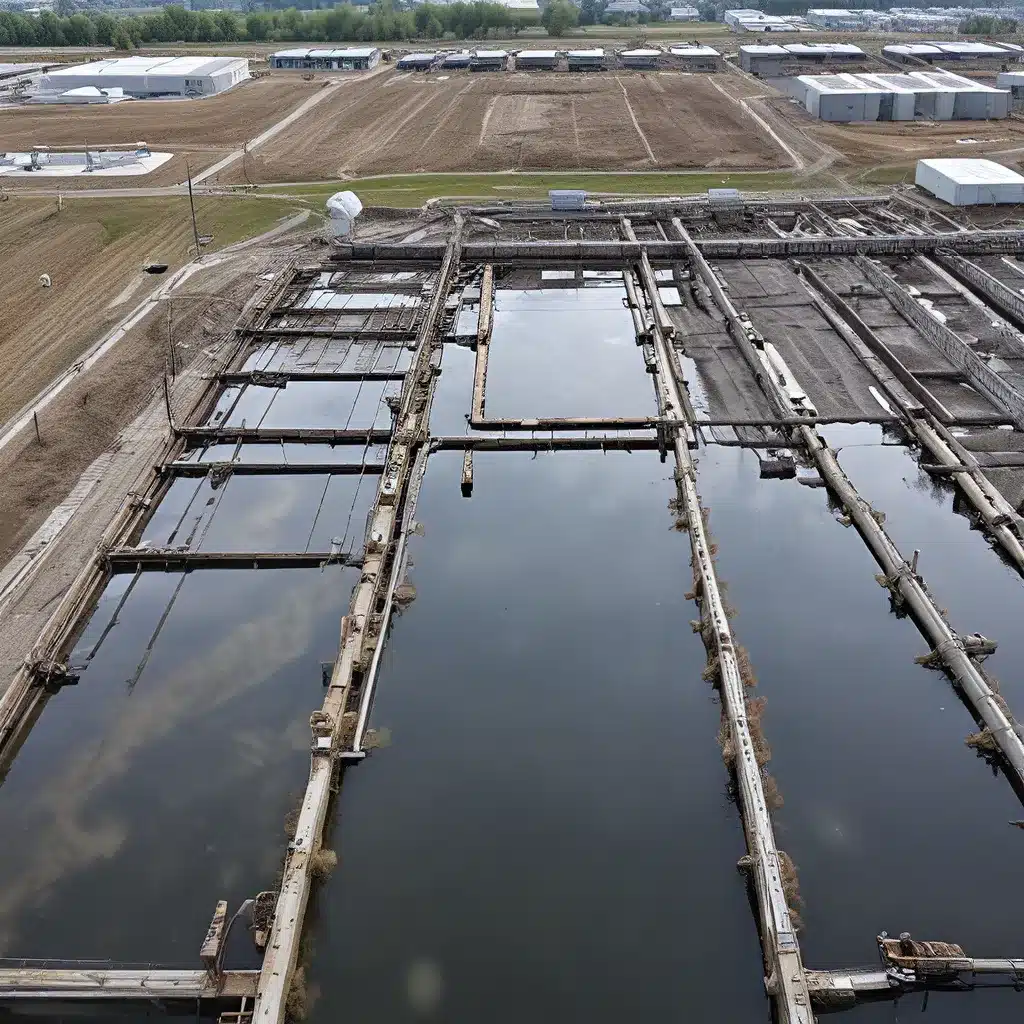
Ah, PFAS – those “forever chemicals” that seem to have crept into just about every nook and cranny of our modern lives. It’s a problem that’s been plaguing communities across the country for far too long. But, my friends, the tides are turning, and I’m here to tell you about the advancements in wastewater treatment technology that are helping us tackle this environmental scourge head-on.
The PFAS Predicament
Let’s start by taking a step back and understanding what we’re up against. PFAS, or per- and polyfluoroalkyl substances, are a family of synthetic chemicals that have been used in all sorts of products since the 1940s – from non-stick cookware to stain-resistant fabrics to firefighting foams. The problem is, these chemicals are incredibly persistent, which is why they’ve earned the moniker “forever chemicals.” They simply don’t break down easily, and they’ve managed to contaminate our soil, air, and – most alarmingly – our drinking water.
As the EPA has reported, exposure to PFAS has been linked to a whole host of serious health issues, including certain cancers, liver and heart damage, and even developmental problems in infants and children. It’s a nightmare scenario, and one that’s affected communities far and wide – from Wilmington, North Carolina, where the Cape Fear River was heavily contaminated, to Oakdale, Minnesota, where a chemical plant’s PFAS-laced waste has taken a toll on the local population.
Advancements in Wastewater Treatment
But here’s the good news: the tide is starting to turn. Thanks to advancements in wastewater treatment technology, we’re now better equipped than ever to tackle the PFAS problem head-on. Let me walk you through some of the cutting-edge solutions that are making a real difference.
Granular Activated Carbon: The Workhorse
One of the most widely used and effective technologies for removing PFAS from water is granular activated carbon (GAC). This tried-and-true method works by passing the contaminated water through a bed of carbon granules, which effectively adsorb and trap the PFAS molecules. As the EPA has noted, the Cape Fear Public Utility Authority in Wilmington, North Carolina has successfully deployed a GAC system to remove PFAS from their drinking water, and it’s been a game-changer for the community.
Reverse Osmosis: The Filtration Powerhouse
Another promising technology for PFAS removal is reverse osmosis (RO). This process uses a semi-permeable membrane to filter out contaminants, including PFAS, from the water. RO systems are particularly effective at removing the longer-chain PFAS compounds, which tend to be the most persistent and problematic. And the best part? RO can remove up to 99% of PFAS from the water, making it a highly reliable solution.
Ion Exchange: The Selective Approach
Ion exchange is another water treatment method that’s proving effective in the fight against PFAS. This technique uses a resin bed to selectively remove the PFAS molecules from the water, leaving behind the other harmless minerals and compounds. The beauty of ion exchange is its precision – it can target specific PFAS compounds, making it a highly tailored solution for addressing particular PFAS challenges.
Emerging Technologies: The Future is Bright
But the advancements don’t stop there. As the World Economic Forum has reported, there are a number of promising new technologies on the horizon that are poised to take the PFAS battle to the next level. Plasma-based oxidation, for instance, uses high-energy plasma to break down and destroy PFAS compounds, while electrochemical oxidation harnesses the power of electricity to achieve the same goal. And the possibilities don’t end there – researchers are constantly exploring innovative ways to tackle this persistent problem.
A Holistic Approach
But, of course, it’s not just about the technology. Tackling PFAS contamination requires a holistic, multi-pronged approach. As the White House has emphasized, the Biden-Harris administration has been leading the charge on this front, securing historic levels of funding to help states and territories implement PFAS testing and treatment systems, as well as supporting efforts to address PFAS pollution in a range of other areas, from firefighting foams to food packaging.
And the good news is, these efforts are already making a tangible difference. As the EPA has reported, the agency’s new national drinking water standard for PFAS is expected to protect around 100 million people, prevent thousands of premature deaths, and reduce tens of thousands of serious illnesses. It’s a significant step forward, and one that’s been a long time coming.
A Brighter Future on the Horizon
So, my friends, while the PFAS problem may have seemed like an insurmountable challenge for far too long, the tide is turning. With the advancements in wastewater treatment technology and the concerted efforts of the government and the scientific community, I believe we’re poised to make real, tangible progress in tackling this environmental scourge.
Of course, there’s still a lot of work to be done, and as the EPA has acknowledged, this is just the beginning. But with the right tools, the right mindset, and the right commitment to protecting our communities, I have no doubt that we can turn the tide on PFAS contamination, ensuring that everyone, no matter where they live, has access to clean, safe drinking water.
So, let’s roll up our sleeves and get to work, shall we? The future of our water supply – and the health of our loved ones – depends on it. Inland Waters Inc. is ready to be your partner in this critical fight.


